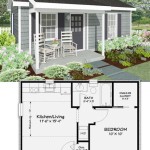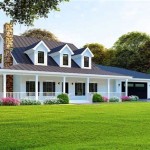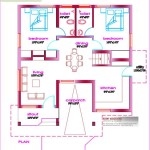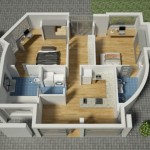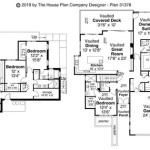Wood Duck House Building Plans: A Comprehensive Guide
Wood ducks (Aix sponsa) are among the most visually striking waterfowl in North America. Their vibrant plumage and unique nesting habits make them a favorite among bird enthusiasts. Providing suitable nesting habitat is crucial for supporting wood duck populations, particularly in areas where natural tree cavities are scarce. Constructing and installing a wood duck house, also known as a nest box, is an effective way to contribute to their conservation. This article details comprehensive wood duck house building plans, outlining the materials, dimensions, and construction techniques necessary for creating a safe and attractive nesting site.
Successful wood duck house construction begins with a thorough understanding of the species' nesting preferences. Wood ducks are cavity nesters, typically utilizing hollow trees near water sources. They require an entrance hole large enough for passage but small enough to deter larger predators. The interior of the nest box must offer sufficient space for the hen to lay and incubate her eggs. A rough interior surface, achieved through scratching or the addition of a climbing ladder, is essential to allow ducklings to exit the nest box after hatching.
Selecting appropriate materials is critical for the durability and longevity of the wood duck house. Untreated lumber, specifically cedar, redwood, or cypress, is highly recommended due to its natural resistance to decay and insects. Pressure-treated lumber should be avoided as the chemical treatments can be harmful to the ducks. Exterior-grade plywood can also be used, but it should be properly sealed and painted to protect it from the elements. Fasteners should be rust-resistant, such as galvanized or stainless steel screws and nails.
Key Point 1: Detailed Construction Plans and Dimensions
Accurate dimensions are crucial for creating a functional and effective wood duck house. Deviations from these specifications can render the nest box unsuitable for its intended purpose. The following dimensions provide a standard guideline:
Overall Dimensions:
- Height: 24 inches (61 cm)
- Width: 12 inches (30.5 cm)
- Depth: 12 inches (30.5 cm)
Material Breakdown:
- Front: 1 piece of lumber 12 inches wide x 24 inches long
- Back: 1 piece of lumber 12 inches wide x 30 inches long (extended to allow for mounting)
- Sides: 2 pieces of lumber 12 inches wide x 24 inches long
- Bottom: 1 piece of lumber 12 inches wide x 12 inches long
- Roof: 1 piece of lumber 14 inches wide x 16 inches long (creates an overhang)
Entrance Hole:
- Diameter: 4 inches (10 cm)
- Position: Centered, approximately 4 inches from the top of the front panel
Internal Ladder/Scratching:
- Use galvanized hardware cloth, create groves in wood, or install a small ladder below the hole.
Construction Steps:
- Cut all lumber pieces to the specified dimensions. Use precise measurements to ensure proper assembly.
- Cut the entrance hole in the front panel using a hole saw or jigsaw. Ensure the edges are smooth to prevent injury to the ducks.
- Assemble the sides, bottom, and front panels. Use screws and waterproof glue for a secure and weather-resistant bond.
- Attach the back panel, ensuring the extended portion protrudes beyond the bottom edge. This extension will be used for mounting the nest box.
- Construct the roof. An overhanging roof protects the entrance from rain and provides shade. Attach the roof using hinges on one side for easy access for cleaning and maintenance.
- Install the internal ladder or scratching. This feature is essential for ducklings to climb out of the nest box.
- Drill drainage holes in the bottom of the nest box. This prevents water accumulation and helps maintain a dry nesting environment.
Once constructed, the wood duck house can benefit from painting or staining, however, it is imperative to use only non-toxic, water-based products. Apply a light, natural color to avoid overheating the nest box in direct sunlight. The addition of wood shavings or natural bedding material inside the box assists the duck in establishing a comfortable nesting environment.
Key Point 2: Installation and Placement Considerations
The location and method of installation significantly impact the attractiveness and usability of the wood duck house. Wood ducks prefer nesting sites near water, such as ponds, lakes, marshes, and streams. The ideal placement should provide a clear flight path to the entrance hole, minimizing obstructions from branches or vegetation. Installation height is also a critical factor in predator deterrence.
Placement Guidelines:
- Proximity to Water: Within 100 feet (30 meters) of a permanent water source.
- Habitat: Areas with scattered trees or open water edges.
- Exposure: Partial shade to avoid overheating.
- Orientation: Preferably facing east or southeast to provide morning sun.
Installation Methods:
- Pole Mounting: The most common and recommended method. Use a metal pole or post to elevate the nest box. A predator guard, such as a cone-shaped baffle, should be installed below the nest box to prevent access by raccoons, snakes, and other climbing predators.
- Tree Mounting: Less preferred due to increased predator access. If tree mounting is necessary, choose a smooth-barked tree and install a predator guard. The nest box should be mounted at least 12 feet (3.7 meters) above the ground.
- Over-Water Mounting: Mounting the nest box on a post directly in the water is an effective predator deterrent. Ensure the nest box is high enough to avoid flooding during periods of high water levels.
Regular monitoring is essential for the continued success of the installed wood duck house. Inspect the nest box annually, preferably in the fall or winter, to remove old nesting material, check for damage, and ensure the predator guard is functioning correctly. Replace any damaged components and add fresh wood shavings or bedding material. Consider the addition of a wire mesh ramp inside the box to assist ducklings during exit.
Key Point 3: Maintenance and Predator Control
Maintaining a wood duck house is an ongoing process crucial for its long-term effectiveness. In addition to annual cleaning, predator control measures should be routinely assessed and adjusted as needed. Effective predator control is vital for maximizing nesting success and minimizing losses to egg predation and duckling mortality.
Maintenance Schedule:
- Annual Cleaning: Remove all old nesting material, debris, and parasites. This reduces the risk of disease and provides a clean environment for nesting.
- Inspection: Check for damage to the nest box structure, including cracks, leaks, and loose fasteners. Repair or replace damaged components promptly.
- Predator Guard Maintenance: Ensure the predator guard is securely attached and functioning correctly. Replace or repair any damaged or ineffective guards.
- Bedding Replacement: Add fresh wood shavings or bedding material after cleaning. This provides insulation and comfort for the nesting hen.
Predator Control Strategies:
- Baffle Installation: Cone-shaped or stovepipe baffles are highly effective at preventing climbing predators from accessing the nest box. Ensure the baffle is large enough to prevent predators from reaching around it.
- Greasing the Pole: Applying a thick layer of grease to the mounting pole can deter climbing predators. Reapply grease regularly, especially after rain or snow.
- Vegetation Management: Trim any branches or vegetation that could provide access for predators to climb to the nest box. Maintain a clear buffer zone around the mounting pole or tree.
- Monitoring for Invasive Species: Be vigilant for invasive species that may prey on wood duck eggs or ducklings. Take appropriate measures to control these species if necessary.
Furthermore, consider the impact of other wildlife using the nest box. While wood ducks are the primary target, other species, such as squirrels, starlings, and opossums, may also attempt to nest in the boxes. Regular monitoring can help determine if these species are competing with wood ducks for nesting sites. If necessary, take steps to discourage non-target species from using the nest box, such as temporarily blocking the entrance hole outside of the wood duck nesting season. Responsible monitoring of nest box inhabitants is essential for effective wood duck conservation.
By following these detailed plans and implementing proactive maintenance and predator control strategies, individuals can significantly contribute to the conservation and management of wood duck populations. Providing suitable nesting habitat through the construction and proper placement of wood duck houses is a tangible way to support these beautiful and ecologically important waterfowl.

Scdnr Wood Duck Box Construction

Wood Duck House 70birds Birdhouse Plans Index

Wood Duck Nest Box State Of Tennessee Wildlife Resources Agency

Build Your Own Simple Nest Box For Ducks Dnr News Releases

How To Build A Wood Duck Nesting Box

Pin Page

How To Build A Duck Nest Box

How To Build A Wood Duck Nest Box Hubpages

Woodworking For Wildlife Wood Duck Box

Wood Duck Nest Boxes



